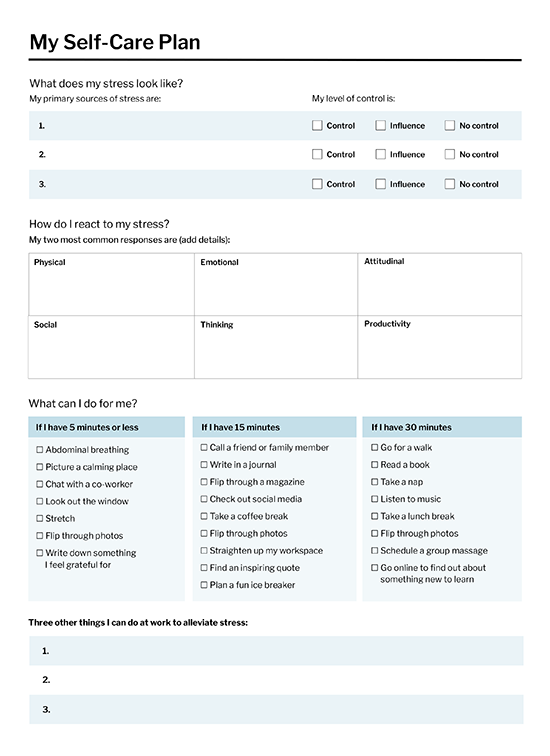How to Take Care of the Caregivers
Use Self-Care Plans to Support Worker Well-Being

The first two years of the COVID-19 pandemic put extraordinary demands on program administrators and front-line staff members, as service delivery methods and client needs rapidly changed. Workers providing essential services during this stressful period were in need of extra social and emotional support themselves, and managers scrambled to find ways to create work environments that were more sensitive to staff well-being.
An increased focus on staff well-being has been an unexpected benefit of the challenges brought on by the pandemic. Over the past few years, MDRC’s technical assistance teams have helped managers use a variety of tools to support their workers, including self-care plans that individuals can use to assess and address the stress of their jobs. This post offers one such plan, adapted by MDRC and shared with many organizations, that managers can use to support their teams.
What Is a Self-Care Plan and What Does It Do?
One of the first steps toward managing stress is to identify what’s triggering it. The plan laid out here begins with this task and prompts users to identify their primary sources of work stress and the level of control they feel they have to deal with them. The plan also prompts users to identify how these stressors affect them physically, emotionally, attitudinally, socially, and cognitively. Armed with a clear sense of what their stressors are and how stress affects their work, users can start thinking through the steps needed to manage it. The plan lays out three techniques for addressing work stress: five-minute tricks to help a person calm down in the moment, 15-minute strategies to relax more fully and feel in control, and 30-minute activities to undertake on a more regular basis for longer-term results.
For Managers: How to Use a Self-Care Plan
Managers can use this tool as a springboard for conversation during one-on-one supervision sessions and as part of regularly scheduled staff meetings. Both settings can be useful, and each may elicit different kinds of responses and information. For example, staff members may be more forthcoming about their personal sources of stress in one-on-one meetings. Group settings, on the other hand, may help the team generate collective solutions and offer support through peer-to-peer connections and collaborative problem-solving—information that managers can use to better understand what their teams need. It’s important for managers to follow up and help staff members find time for the activities listed in their individual self-care plans.
For Staff Members: How to Complete a Self-Care Plan
- What does your stress look like? Take a moment to think about your three primary sources of stress. Consider whether it’s something that you can control, something you can influence, or something that is out of your control. This can help you figure out what to do about it. For instance, if it’s something you can’t control you may have to change how you think about the stressor.
- How do you react to stress? Write down specific examples of how the stressor influences your physical reactions, emotional responses, attitudinal reactions, thoughts, productivity, and social interactions.
- What can you do for you? Read through the list of ideas and make a plan to try some of the suggestions—or come up with ideas of your own.






